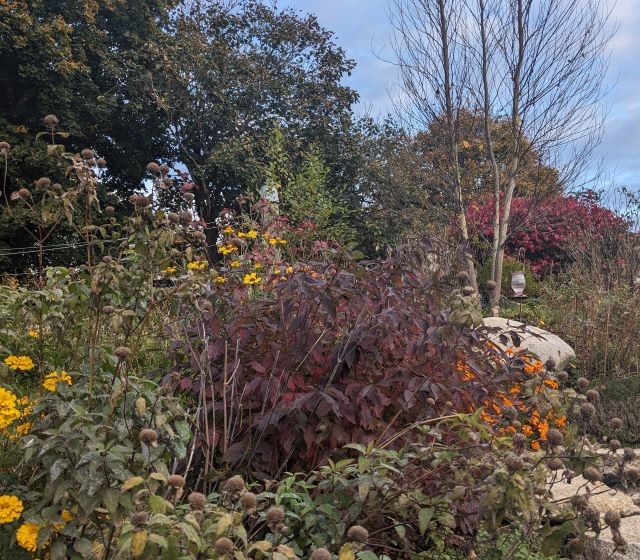The air has a definite snap to it and trees are more bare than brilliant. It must be time to tidy the garden, right?
Before you scrape your beds clear of growing season debris, consider the benefits of leaving them be. The stalks and leaves of our gardens provide necessary habitat for a wide variety of insects and small wildlife. Xerces Society has published an online resource to learn more about “leave the leaves.”
Uli Lorimer, Director of Horticulture at Native Plant Trust and former Curator of Native Flora at Brooklyn Botanical Gardens, understands both the need to leave your garden detritus where it falls and the urge to tidy.
- First, consider human safety. If your leaves have fallen where you need to walk, rake them to a bed or a compost pile.
- Second, understand that the least useful place for garden debris and leaves is the landfill. If you need to move all your debris to a compost pile, that’s going to be just fine. (Remember, it’s too cold for the compost to break down in the winter, so insects living in your debris will be just fine.)
- Third, consider esthetics. We garden for the beauty of it, and we shouldn’t neglect our own delight. Lorimer recommends tidying the front of your beds: pull up and compost annuals, bundle tall stalks (or cut them down and leave them in the bed), add leaf debris from other parts of your yard or remove heavy leaves so that spring ephemerals have room to grow. Lorimer also cautions us to reconsider how we think of our gardens in the after-season. Using words like “messy” to describe dormant beds leads us to devalue to them. We should try to retrain our eye to see the winter garden as full of expectant life!
- Finally, conserve energy. Why spend the energy to rake everything out of your beds only to chop them up and put them back! Leaving the debris adds to next year’s soil and gives small critters a home for the winter. Keep in mind that wet leaves stack and stick and make it hard for small plants to grow, so consider mulching in beds where delicate plants need to push up early in spring. If you have a lawn, give it one last pass with the mower to mulch leaves into smaller sizes–if you have lots of oak trees, you will want to move the leaf litter off your lawn. Look to where leaves naturally collect. Do they suggest a spot for leaves from other parts of your garden?

Read or listen to the complete interview with Uli Lorimer and journalist Margaret Roach.

